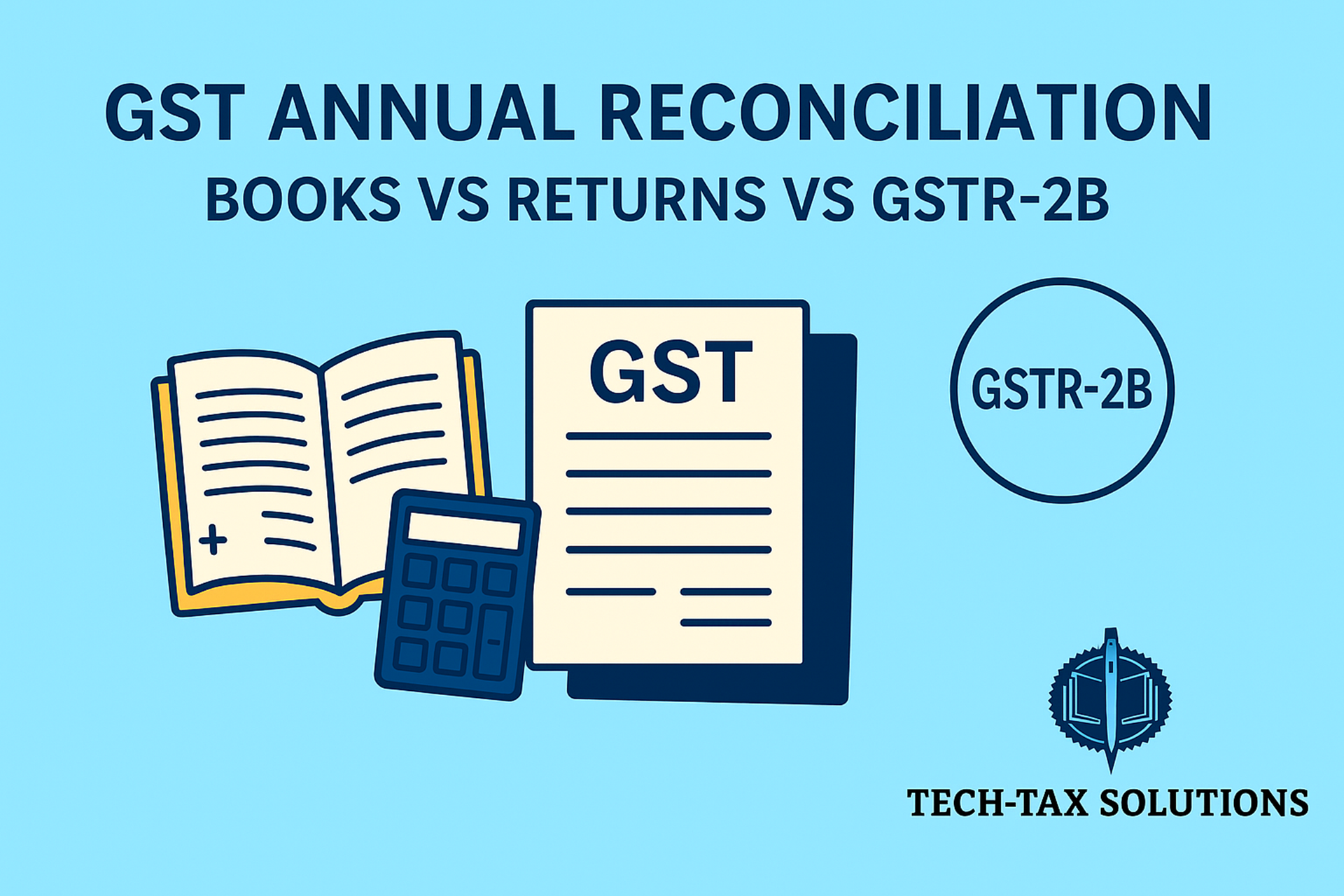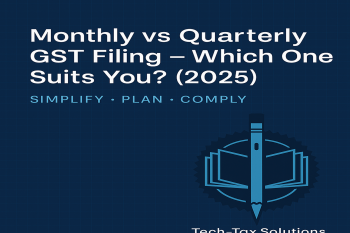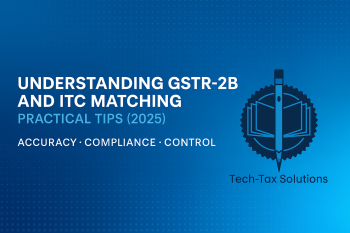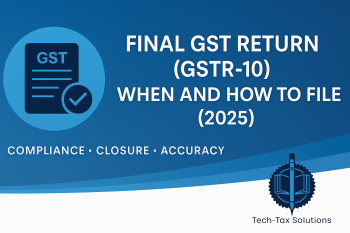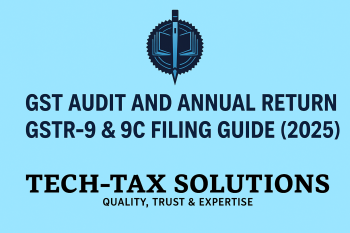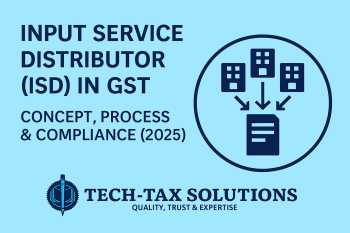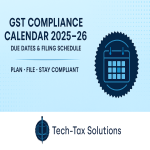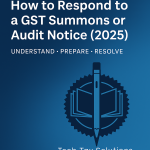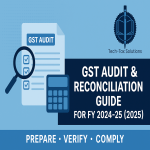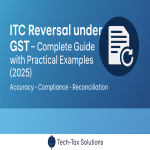🔹 Introduction
Annual reconciliation under GST ensures consistency between Books of Accounts, GSTR-1, GSTR-3B, and GSTR-2B. Any mismatch in these can invite departmental scrutiny, ITC reversals, and even penalties. With increasing use of data analytics by GSTN, reconciliation has become one of the most critical compliance areas in 2025.
(Reference: Sec. 44 of CGST Act, Rule 80 of CGST Rules, CBIC circulars till 2025)
🔹 Purpose of GST Annual Reconciliation
-
✅ Ensure taxable turnover in books matches GSTR-1 & GSTR-3B.
-
✅ Ensure ITC claimed in GSTR-3B matches ITC available in GSTR-2B.
-
✅ Detect unreported sales, missed ITC, or excess claims.
-
✅ Avoid notices for differences flagged by GSTN.
🔹 Applicability of GSTR-9 & GSTR-9C (as of FY 2024-25)
-
GSTR-9 (Annual Return):
-
Mandatory for all registered taxpayers with turnover above ₹2 crore.
-
Optional for turnover up to ₹2 crore.
-
-
GSTR-9C (Reconciliation Statement):
-
Self-certified reconciliation statement required if turnover above ₹5 crore.
-
Audit by CA/CMA is NOT mandatory (removed from FY 2020-21 onwards).
-
🔹 Timelines for FY 2024-25
-
30th November 2025 – Last date to rectify mismatches in returns of FY 2024-25.
-
31st December 2025 – Due date for filing GSTR-9 & 9C for FY 2024-25.
🔹 Step-by-Step Annual Reconciliation Process
📌 Step 1: Sales Reconciliation
-
Compare Books turnover vs GSTR-1 (outward supplies).
-
Match tax liability with GSTR-3B.
📌 Step 2: ITC Reconciliation
-
Compare ITC in Books vs GSTR-2B.
-
Identify ineligible ITC (blocked u/s 17(5)).
-
Reverse excess ITC claimed with interest.
📌 Step 3: Debit/Credit Notes Reconciliation
-
Verify all debit/credit notes recorded in books are reported in returns.
📌 Step 4: E-Way Bill Reconciliation
-
Match sales reported in E-Way Bill portal vs GSTR-1.
📌 Step 5: Payment Reconciliation
-
Verify cash & credit ledger balances.
-
Ensure challans (PMT-06) correctly utilized.
📌 Step 6: Prepare Annual Return
-
File GSTR-9 with final consolidated data.
-
File GSTR-9C (if applicable) with self-certification.
🔹 Practical Examples
Example 1: Turnover Mismatch
Books: ₹10 crore turnover.
GSTR-1: ₹9.8 crore.
Difference: ₹20 lakh → must reconcile and disclose in GSTR-9.
Example 2: ITC Mismatch
Books: ITC ₹50 lakh.
GSTR-2B: ITC ₹48 lakh.
Excess claim: ₹2 lakh → reverse with interest.
Example 3: Missed Credit Note
Credit note of ₹5 lakh in books but not reported in GSTR-1. Must be rectified before 30th Nov 2025.
🔹 Common Mistakes
-
Claiming ITC beyond 30th November deadline.
-
Ignoring credit/debit notes while reconciling.
-
Filing GSTR-9 without reconciling with books.
-
Mismatch in turnover between books & GST returns.
🔹 Penalties for Non-Compliance
-
Late filing fee (Sec. 47): ₹200 per day (₹100 CGST + ₹100 SGST), capped at 0.5% of turnover.
-
Wrong ITC claims: Penalty under Sec. 74A (introduced FY 2024-25).
-
Departmental scrutiny: Audit and notices if major mismatch.
🔹 Best Practices
-
✅ Do quarterly reconciliation instead of waiting for year-end.
-
✅ Use accounting software with GST integration.
-
✅ Engage professionals for reconciliation & filing.
-
✅ Maintain vendor follow-up for missing invoices in GSTR-2B.
🔹 FAQs
Q1. Is audit by CA/CMA required for GSTR-9C?
➡️ No, self-certification is sufficient from FY 2020-21 onwards.
Q2. Can ITC be claimed after 30th November?
➡️ No, ITC claims must be made before 30th November of following FY.
Q3. Is GSTR-9 optional for small taxpayers?
➡️ Yes, if turnover ≤ ₹2 crore.
Q4. Can mismatches be explained in GSTR-9C?
➡️ Yes, reconciliation differences must be disclosed.
Q5. What if GSTR-9 is not filed?
➡️ Late fee + risk of notice under Sec. 74A.
🔹 Conclusion
Annual reconciliation is one of the most important GST compliances. Any mismatch in sales or ITC can result in ITC denial, interest, and penalty. Timely reconciliation ensures smooth filing of GSTR-9 and 9C, avoiding future disputes.
📌 Need expert help in GST reconciliation, GSTR-9/9C filing, or ITC review?
Contact Tech-Tax Solutions – Quality, Trust & Expertise in Ghaziabad, Noida & Delhi.
